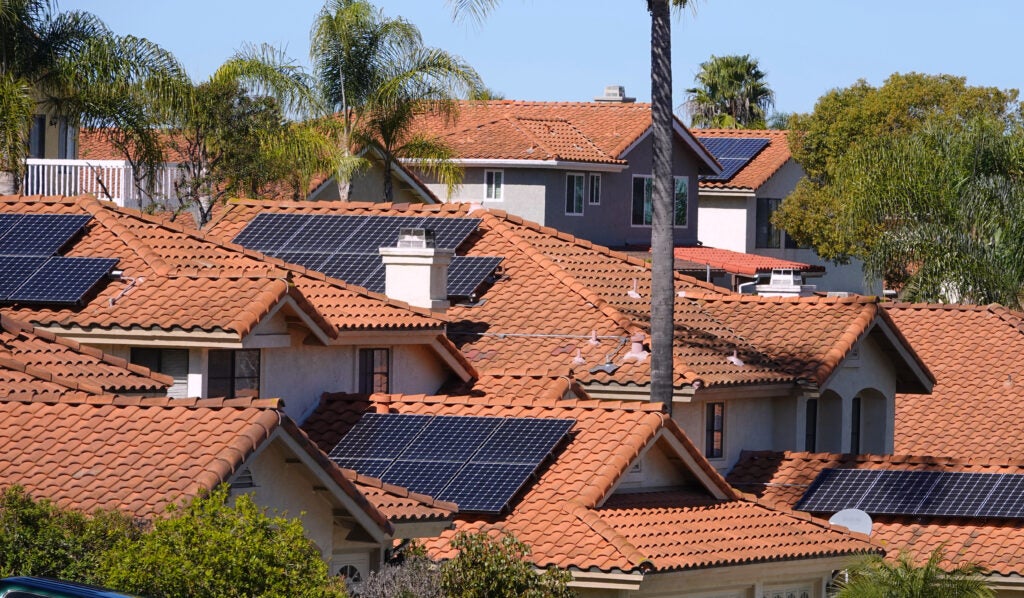REPowerEU is poised to propel member states rapidly and resolutely towards greater energy security through measures that include an intensified focus on energy efficiency, electrification and renewable generation.
This urgent ambition, both desirable and laudable, is also an opportunity to achieve the decarbonisation required to mitigate climate change, provided it is coupled with the electricity market design reforms that are needed to give energy ‘prosumers’ the scope to participate.

Discover B2B Marketing That Performs
Combine business intelligence and editorial excellence to reach engaged professionals across 36 leading media platforms.

Prosumers – the term encompasses all that produce, store and consume energy, from businesses to individuals and households – have the combined mass to make a huge difference to how energy is generated and managed. There are potentially millions of them.
Together, they can provide the flexibility to help stabilise a high-renewable European energy system; the accelerated deployment of wind and solar generation proposed by REPowerEU must be balanced by demand-side flexibility.
Understanding demand-side flexibility
Demand-side flexibility manifests in the choices that businesses and households make about their energy use. This might include the time at which a factory decides to run a power-hungry process or the time at which an electric vehicle (EV) owner chooses to charge.
Prosumers that generate power from assets such as solar panels or wind turbines can choose whether to use it immediately or store it for use when needed. Either way, this reduces pressure on the grid and flattens peaks in demand.

US Tariffs are shifting - will you react or anticipate?
Don’t let policy changes catch you off guard. Stay proactive with real-time data and expert analysis.
By GlobalDataStorage capacity is essential to demand-side flexibility, whether it is in the battery energy storage systems that businesses (and increasingly homeowners) may choose as part of their renewable energy installations or in EV batteries that connect to the grid via their chargers.
Selling storage capacity to the grid is among the ancillary services prosumers can provide, and there will be a growing market for it. Grid operators will want to buy in capacity to help manage the increasing volumes of intermittent and variable power from new wind and solar farms.
Importance of consumer choice
Choice is a recurring theme, and for good reason. The assets and controls that enable demand-side flexibility, including EVs, tend to be more expensive than their non-flexible counterparts and there is a learning curve to using them to full effect. Budding prosumers will only invest time and money if they can see how to benefit.
We have observed recently, in Germany, how consumer choice and system efficiency will be vital in the transition away from fossil fuels, when a proposed ‘dispatchable appliances law’ was hastily withdrawn by the federal energy ministry amid widespread public opposition.
Wildly unpopular, the proposals included penalising flexibility owners with higher network fees if they refused to relinquish control of assets such as EV chargers and heat pumps to network operators at pre-determined hours of the day to permit network management via demand curtailment.
The German public baulked, and vehicle manufacturers backed consumer sentiment because they feared such a move could severely dent the sale of EVs.
Better market design
Existing electricity market design is predicated on a one-way flow of energy from large generators to passive users, but a decentralised model is quite the reverse: it involves many prosumers trading energy and ancillary services via two-way energy flows.
Market design reform could unlock mass participation in demand-side flexibility relatively easily by making the electricity market attractive to prosumers. If budding prosumers can see and understand how to monetise flexibility assets to reduce their overall energy costs, participation will increase dramatically.
[Keep up with Energy Monitor: Subscribe to our weekly newsletter]
Price signals, such as time-of-use tariffs, may be part of this, but there is more to it. Prosumers, because of their size, need some protection against power price fluctuations so that they can confidently predict return on the investments needed to upgrade buildings and install related electrical infrastructure such as EV chargers.
For businesses, return on investment is fundamental, and they hold the greatest potential to offer demand-side flexibility. Data centres are among the businesses that can make vast quantities of energy storage capacity available, provided it is attractive for them to do so.
Next steps
Policymakers, generators and energy industry experts must come together to devise a plan for market reform that can be implemented at speed. Unlocking private investment is critical in both the short and long term.
A different set of rules will provide the choice and security that is so important to investor confidence. New rules need to make large demand-side flexibility projects bankable. Smaller contributions, from EV owners and the like, need to be encouraged too.
Achieving the energy efficiency, electrification and renewable ambition of REPowerEU will involve us all. The road map must include energy system flexibility.





